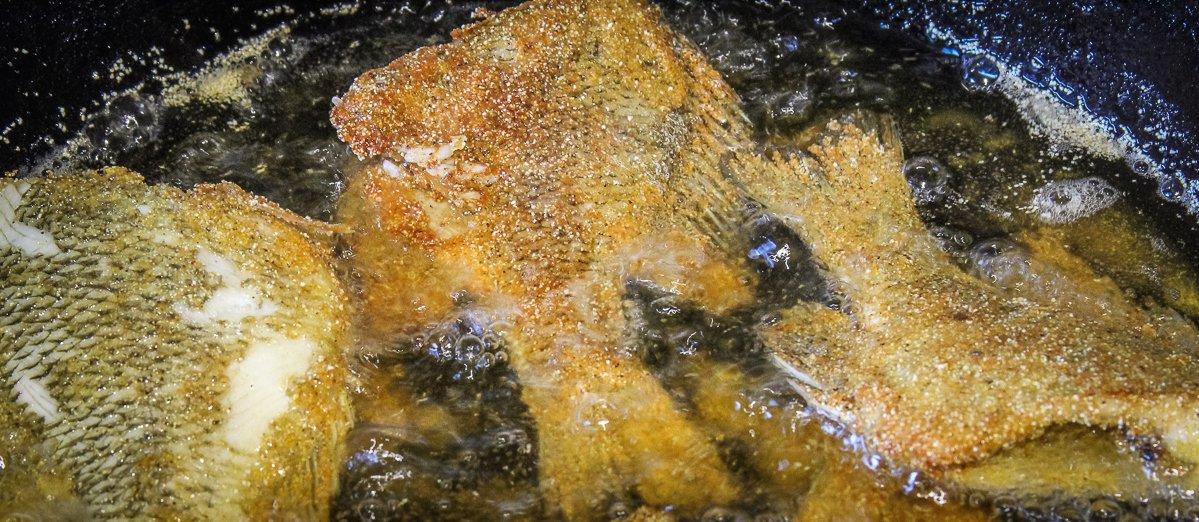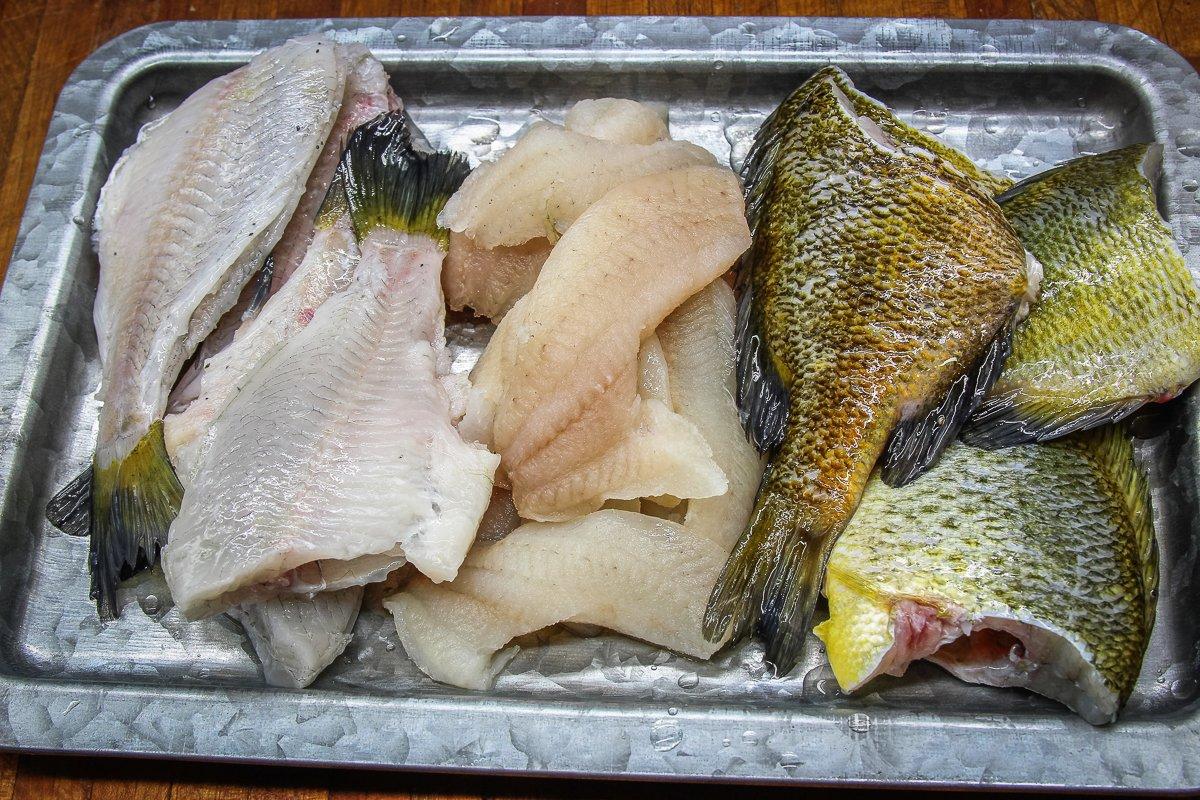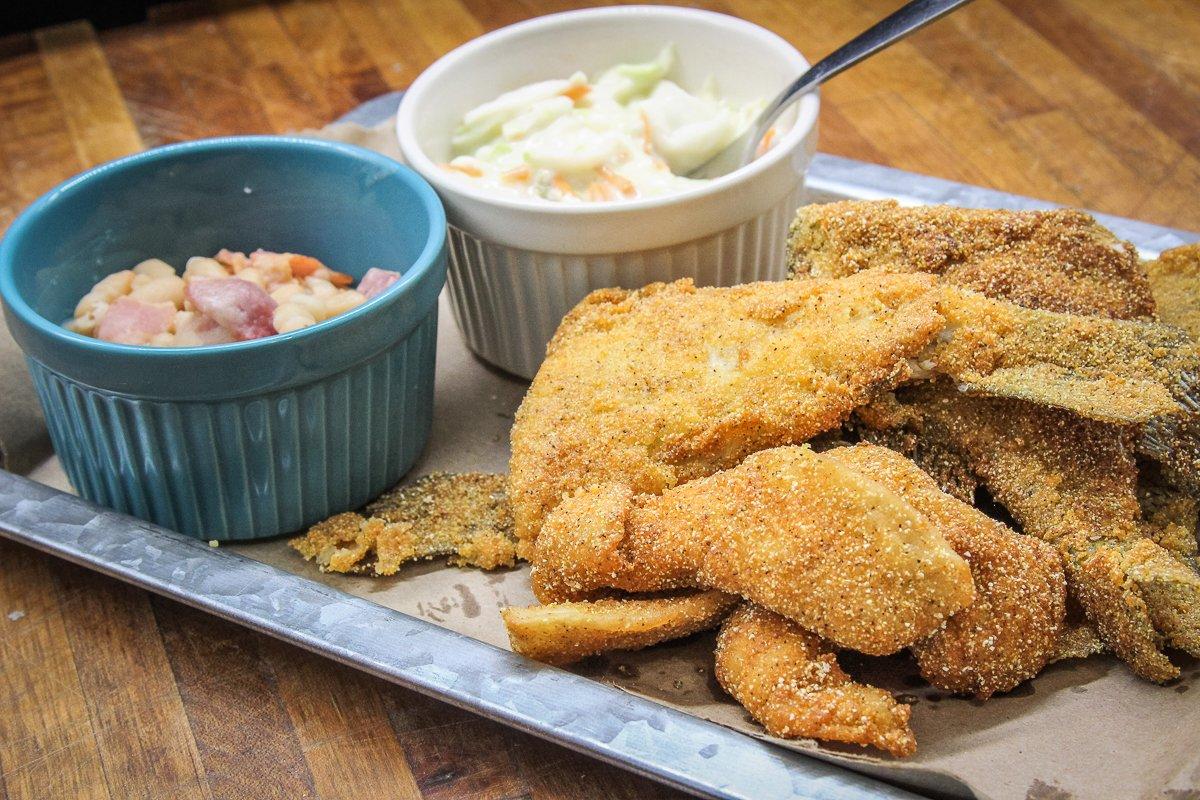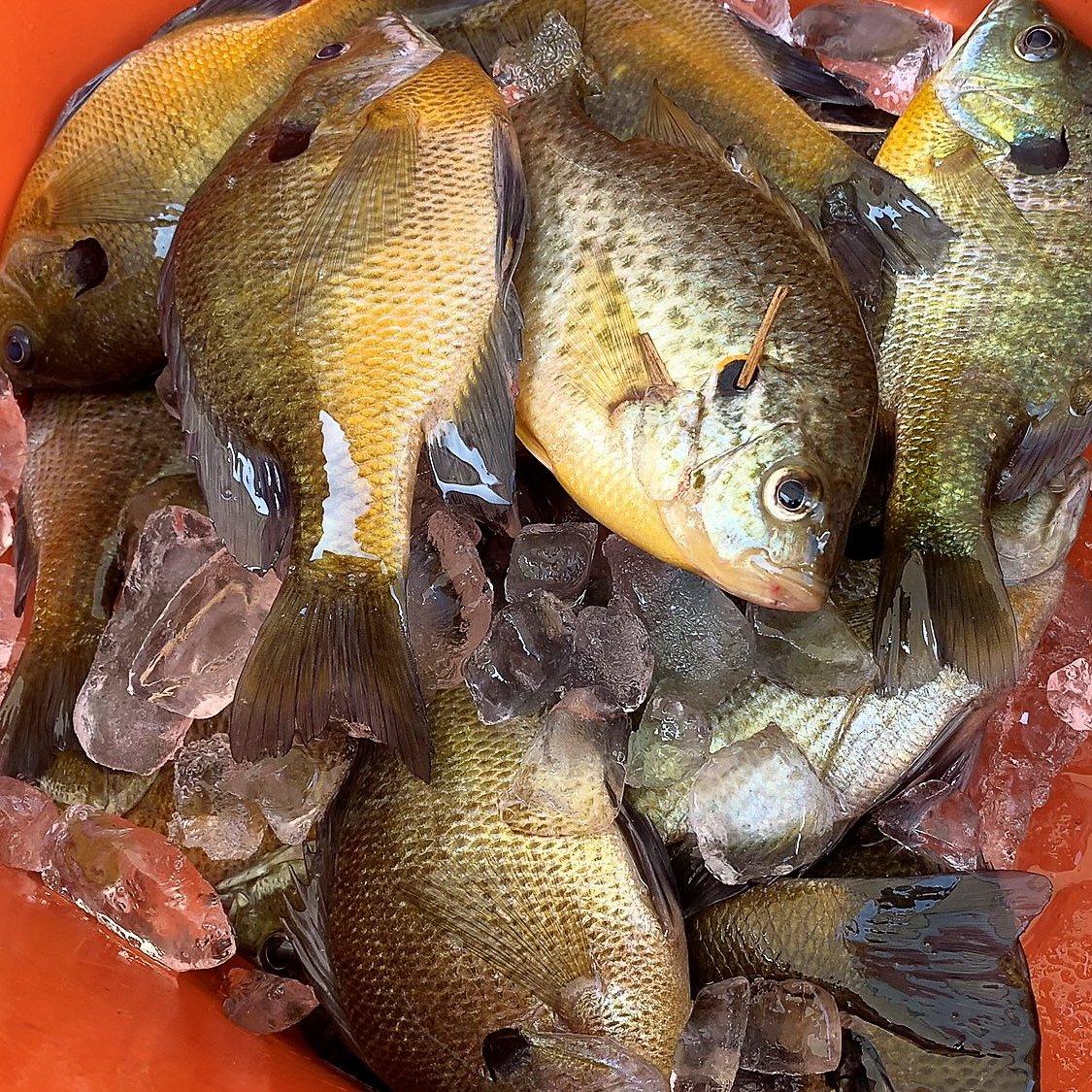Wading into the Great Bream Debate with three classic ways to prepare the tastiest of all panfish
Growing up, my brother and I had full run of more river bottom farmland than we could cover in a day by foot, by bicycle, or on horseback. Along with the river itself, the land was dotted with farm ponds of various shapes and sizes. We spent our summers fishing them all. Our only rules were to tell our mom where we planned to go, make sure all gates were closed and latched, and clean our own fish if we wanted Mom to cook them for dinner.
For a couple of young farm kids, most of our early catch consisted of bluegills caught on worms dug from the garden or grasshoppers scavenged along the pond banks. We were pretty enthusiastic about the possibility of catching dinner for the family, and none too particular about the size of the fish that went on our stringer.
Remembering rule No. 3, we'd rush home to clean our catch the easiest way we knew how. We'd remove the head and entrails, then scale the fish with a kitchen spoon we'd sneak out of the silverware drawer. Mom would dredge those tiny bluegills in seasoned cornmeal and fry them up in Crisco, fins, tail and all. Those crunchy tails were always my favorite part, like crispy fish-flavored potato chips.
As we honed both our fishing and cleaning skills, we abandoned the head-and-scale method and started skinning our catch. We'd remove the dorsal and ventral fins in the process, but we'd leave the tails. The cooking method was the same, but you didn't lose all the crunchy crust if you didn't like fish skin.
By the time we got selective enough to keep only the biggest bull gills, we'd become proficient enough with our fillet knives to start boning out our catch, ending up with two perfectly sized strips of boneless bluegill meat. And no crunchy tail.
These days, we fillet most of our fish, including the big gills, but I still like to fry some up every now and then skin on, or skinned with the bones and tail still attached.
Over the years, I've heard fishermen and women openly proclaim that one method is better than the other. Seems like everyone has a favorite. Shoot, even here at home my family can't agree on which method produces the tastiest dinner. But honestly? I don't know that there's a bad way to eat fried bluegill.
Keep reading for the pros and cons of each method.
Skin On and Scaled
Pros:
- If the crunchy skin is your favorite part of a fish, this method is for you.
- Easiest of the three to complete at the skinning table. Even the youngest of fishers can grab a spoon and help out.
- Best preparation for smaller bluegills. There isn't a lot of meat on a small panfish. Keeping it whole with the skin on preserves every edible bite.
- Keeps the tail on for crispy tater chip goodness.
- Many claim that cooking fish on the bone improves the flavor.
Cons:
- Not everyone enjoys the flavor and texture of fish skin. Yeah, you can peel it off, but you lose all that crunchy, delicious exterior if you do.
- Bones are left in. Younger diners will need some supervision with bone-in panfish to prevent an errant bone down the throat.
Skinned and Bone In
Pros:
- Almost as easy at the fish cleaning table as scaling. It just takes a little practice to peel away the skin without removing any of the meat.
- Everybody gets to savor the crunchy cornmeal coating. No matter where you fall on the fish-skin-is-good-eats scale, you can enjoy this one.
- Keeps the bone in for added flavor.
- Retains the crunchy tail for snacking.
Cons:
- Still has the bones, a definite concern for young diners.
- It's easy to peel away some good meat with the skin until you get the hang of it. Cold fish are easier to skin than warm, so toss your bluegills on ice before cleaning (a good idea for any fish species you plan to eat during warm weather).
- Thick bluegills take a bit longer to cook when whole. Take care not to overcook the exterior before the interior meat cooks through.
Boneless Fillets
Pros:
- Goes down like a bucket of popcorn at a movie theater. If you want to eat a bunch of fish in a hurry, this is the way for you.
- Cooks fast. Boneless fillets dropped into a pot of 350-degree peanut oil are done in minutes, meaning you can crank out fried fish quickly enough to please a hungry crowd.
- Less worry about bones for younger diners.
Cons:
- No crispy tail to enjoy.
- You lose the added flavor benefit of cooking the meat on the bone.
- Takes a little skill at the fish cleaning table. It's easy to leave behind valuable meat if you aren't careful.
- Works best when you get into a mess of those big bull gills so thick that you can't wrap your hand around them to remove the hook. Filleting small bluegills is an exercise in futility.
Have a favorite? Weigh in. Let us know your preferred method to munch down on one of the best-eating fish that swims.











